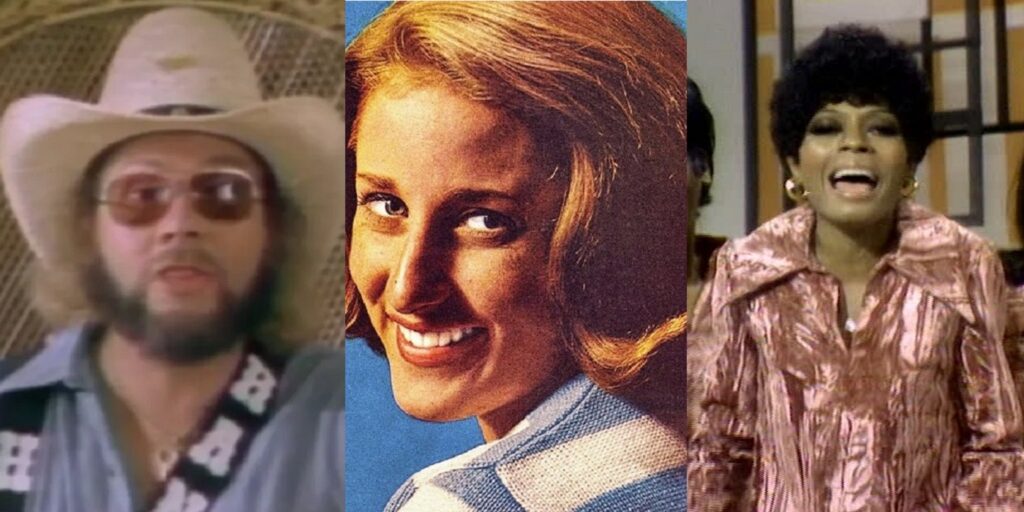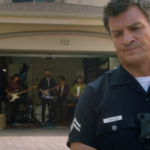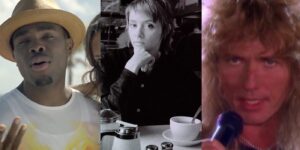
Today, we look at five famous songs that later had sequel songs by the same artist who performed the original song
In Drawing Crazy Patterns, I spotlight at least five things from pop culture that fit under a specific theme (basically, stuff that happens frequently enough to be worth pointing it out). Note that these lists are inherently not exhaustive. They are a list of five examples (occasionally I’ll be nice and toss in a sixth). So no instance is “missing” if it is not listed. It’s just not one of the five examples that I chose. You can always feel free to suggest ANOTHER example that fits the theme, if you’d like, but nothing is “missing” from this list.
September is a month of Drawing Crazy Patterns!
Very often, there are fictional characters who get songs written about them, and thus you will see the same characters appear in a number of different songs. Rudolph the Red-Nosed Reindeer, for instance, has been the star of a bunch of different songs. In a different vein, the songwriter Dennis Linde wrote a bunch of country songs about a jerk named Earl (the most famous one was the one where Earl was finally killed off, which became a huge hit for The Chicks in 2000).
Here, though, we’re looking at famous songs where the original artists who sang the first song later did a sequel song.
“JOHNNY B. GOODE”/”BYE BYE JOHNNY”
One of the most famous rock and roll songs of all time, Chuck Berry’s 1958 classic, “Johnny B. Goode” was quite likely the first hit song about how being a hit musician is really, really awesome….
It basically tells Berry’s own story, a young man who was really good at the guitar who became a star.
A couple of years later, Berry continued the journey of Johnny in “Bye Bye Johnny,” with Johnny now a grown man (it’s worth noting that Berry first wrote “Johnny B. Goode” in 1955, so obviously five years have passed in the songs, while only two years passed between the released songs)…
“IT’S MY PARTY”/”JUDY’S TURN TO CRY”
Here’s a relatively rare example where the sequel song was ALSO a top five hit.
Lesley Gore burst on to the scene with her monster 1963 hit, “It’s My Party,” about a young woman who is crying at her own Sweet Sixteen party because her boyfriend, Johnny, left her for another girl, Judy…
At some point in the future, I’ll explain the fascinating machinations by the producer of the song, a young Quincy Jones, that led to it becoming a hit.
In any event, the song was such a huge hit that songwriters were hired to quickly rush out a follow-up song, “Judy’s Turn to Cry,” later in 1963, where Johnny leaves Judy to get back with the narrator of the song…
Notice that Gore is not smiling on the cover of the first single, and smiling on the second. Cute. Hacky, but cute! The sequel was a top five hit.
“LOVE CHILD”/”I’M LIVING IN SHAME”
The Supremes were in a major set of flux at the end of the 1960s, with Diana Ross obviously poised to just go solo. There were some creative setbacks (their main writing team, Brian Holland, Lamont Dozier and Eddie Holland, having left Motown over a pay dispute), and a few non-Top 20 hits (which sounds like an absurd problem to have, I know, but when it felt like every song was a number one hit for the group, suddenly not even hitting the Top 20 was a big deal) before getting their last number one hit as a full group in 1968 with “Love Child,” a fairly risqué subject matter for a pop song, about, well, you know, a child born out of wedlock (The Supremes technically had a final number one hit, but it was really just a Diana Ross solo song credited to The Supremes).
“Love Child” knocked “Hey Jude” out of the top of the charts.
In any event, the following year, The Supremes (by the way, by this point, the group was credited as Diana Ross and The Supremes) released “I’m Livin’ in Shame,” which was told from the perspective of the “love child” born in the first song. Doing a riff on the 1959 hit film, Imitation of Life, about a girl who basically erased her mother from her life out of shame at her mother…
Later, when her mother dies, now that shame is turned on herself for doing that to her mother, who did nothing wrong.
“SPACE ODDITY”/”ASHES TO ASHES”
David Bowie’s breakout hit was 1969’s “Space Oddity,” about a Major Tom who is on a mission to outer space…
At the end of the song, Major Tom is basically lost in space. Well, 11 years later, Bowie wrote a sequel song, “Ashes to Ashes”…
Major Tom is still lost in space, and has become addicted to drugs in the time he has spent drifting in space. It’s basically Bowie’s takes on his own drug addiction problems.
“ALL MY ROWDY FRIENDS (HAVE SETTLED DOWN)”/”ALL MY ROWDY FRIEND ARE COMING OVER TONIGHT”
In 1981, hank Williams Jr. had a hit song with the song, “All My Rowdy Friends (Have Settled Down)” about how all of the greats of “outlaw country” (like George Jones, Johnny Cash, Waylon Jennings and Kris Kristofferson) have now, well, you know, settled down….
Three years later, Williams had another big hit with a sequel tune, where his rowdy friends (all of the guys he referenced in the first song appear in the video except Johnny Cash. The video also features Willie Nelson, Cheech and Chong and a bunch of other famous country stars from the era) come over to his place for a bash in the tune “All My Rowdy Friends Are Coming Over Tonight”…
Bizarrely, the ghost of Williams’ famous father even shows up!
The song, of course, is best known for later becoming the theme song for Monday Night Football for many years.
Okay, folks, if you have suggestions for a future Drawing Crazy Patterns, drop me a line at brian@poprefs.com! I don’t have 30 topics just yet, so I could use the suggestions!










The Major Tom Trilogy reached its apotheosis with 1995’s Hallo Spaceboy, Bowie’s collaboration with Pet Shop Boys, and his biggest hit of the 90’s, which told the final tale of the errant astronaut.
Within the context of the songs, why would anyone want Johnny?
In real life, obviously Leslie was more interested in Judy and there should have been a third song where they ended up together.
No “Grandma Got Run Over By a Reindeer”/”Grandpa’s Gonna Sue the Pants Off of Santa”? I would’ve thought that’d be the most famous example.
I had to let this one percolate for a bit. There are quite a few songs with sequels, and I tried to be sure that I factored them all in before I composed my own list of five. The only one on Mr. Cronin’s list to make mine was “It’s My Party”/”Judy’s Turn to Cry”, by Lesley Gore.
Here is my list, in descending order of my preference:
1. “Red Roses for a Blue Lady” (1948)/”Thanks, Mister Florist” (1950), by Vaughn Monroe.
2. “A-Tisket A-Tasket”/”I Found My Yellow Basket” (1938), by Ella Fitzgerald.
3. “Big, Bad John” (1961)/”The Cajun Queen” (1962), by Jimmy Dean.
4. “It’s My Party”/”Judy’s Turn to Cry” (1963), by Lesley Gore.
5. “Snoopy Vs. the Red Baron” (1966)/”The Return of the Red Baron” (1967), by the Royal Guardsmen.
Honourable mention:
“King of the Road” (1964), by Roger Miller/”Queen of the House” (1965), by Jody Miller.
These would’ve been in my list of five, except that “Queen of the House” is not technically a sequel song—it’s an answer song.
DIShonourable mention:
“Santa Baby” (1953)/”This Year’s Santa Baby” (1954), by Eartha Kitt.
I destest the melody of this song, but I appreciate the gall of the lyrics, especially those of the sequel (informing Santa that the stuff he brought her last year is crap, now. and she wants new, better stuff).
Oh man, “This Year’s Santa Baby” is INSANE.